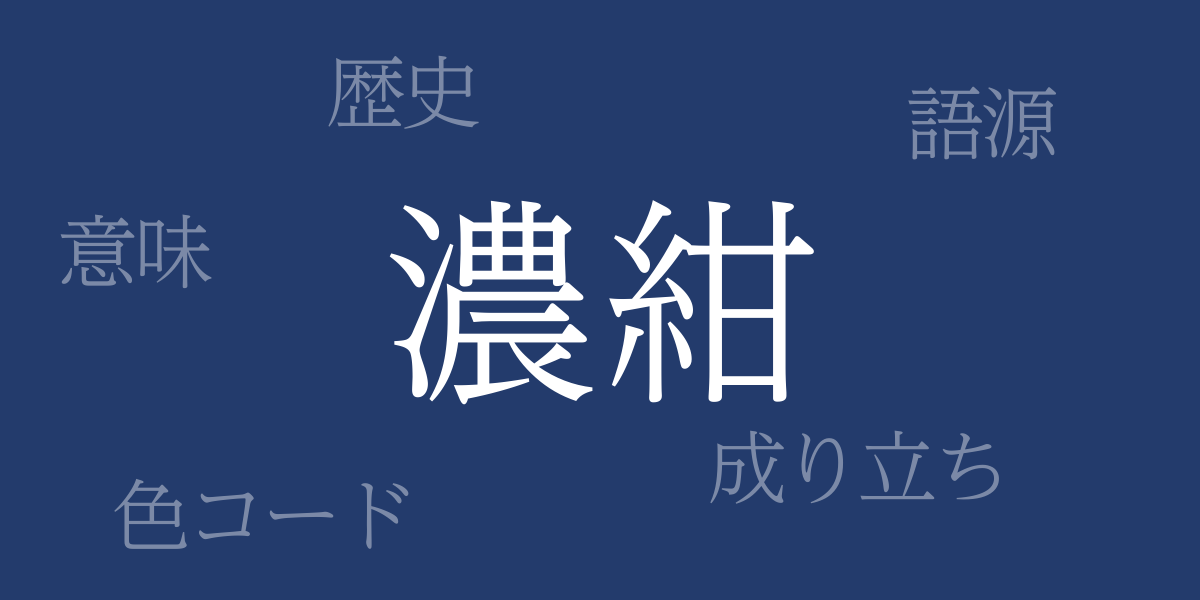Japanese traditional colors have showcased their unique beauty worldwide, with ‘濃紺’ (のうこん, Nōkon) standing out for its depth and calmness. This color embodies the spirituality and aesthetic sensibility of the Japanese people. This article explores the allure of Nōkon, delving into its history, color codes, and its international name, offering a glimpse into the unique worldview held by traditional Japanese colors.
About 濃紺 (のうこん, Nōkon)
濃紺 (のうこん, Nōkon), also known as ‘紺色’ (こんいろ, Kon’iro), refers to a deep blue shade. Positioned as one of Japan’s traditional colors, it is renowned for its formal and dignified presence. Reminiscent of the sea and the night sky, Nōkon combines serenity with profound beauty, finding applications not just in apparel but also in Japanese crafts and art.
History of 濃紺 (のうこん, Nōkon)
Nōkon has been cherished in Japan from ancient times. During the Heian period, it was prominently featured in the garments worn by aristocrats and was particularly favored among samurai. In the Edo period, as indigo dyeing became more widespread, Nōkon reached the common people, marking its presence in the attire of farmers and townsfolk. This traditional dyeing method is still preserved by many artisans today.
Color Codes for 濃紺 (のうこん, Nōkon)
To replicate Nōkon in digital design and web production, specific color codes are essential. Here is an example of Nōkon’s color codes:
- HEX: #233B6C
- RGB: R:35 G:59 B:108
- CMYK: C:67.6 M:45.4 Y:0.0 K:57.6
Western Name for 濃紺 (のうこん, Nōkon)
In English, 濃紺 is known as ‘Navy Blue’. This term originates from the color traditionally used in British Royal Navy uniforms and is widely recognized globally. Its subdued hue makes it popular not only in formal attire but also in casual wear, making it a favorite in the international fashion scene.
Summary of 濃紺 (のうこん, Nōkon)
Nōkon, with its beautiful and historical significance as a Japanese traditional color, is loved worldwide. Its deep blue reflects Japan’s nature, history, and culture and continues to blend into our lives in various forms today. From traditional indigo dyeing to contemporary designs, Nōkon remains a captivating color that will continue to enchant people across generations, ensuring its legacy is shared globally.

























